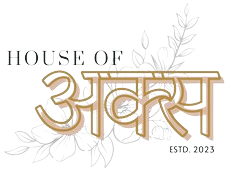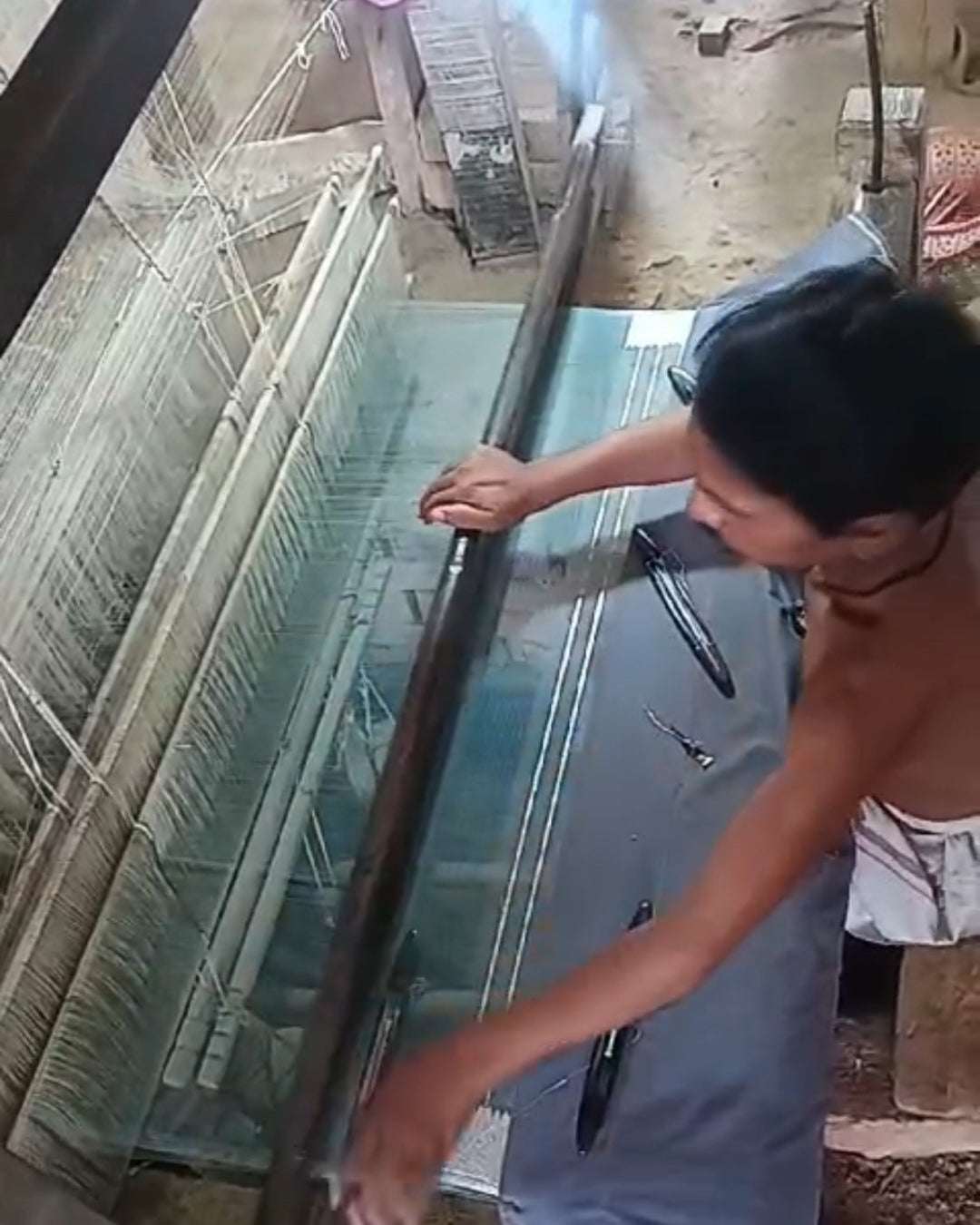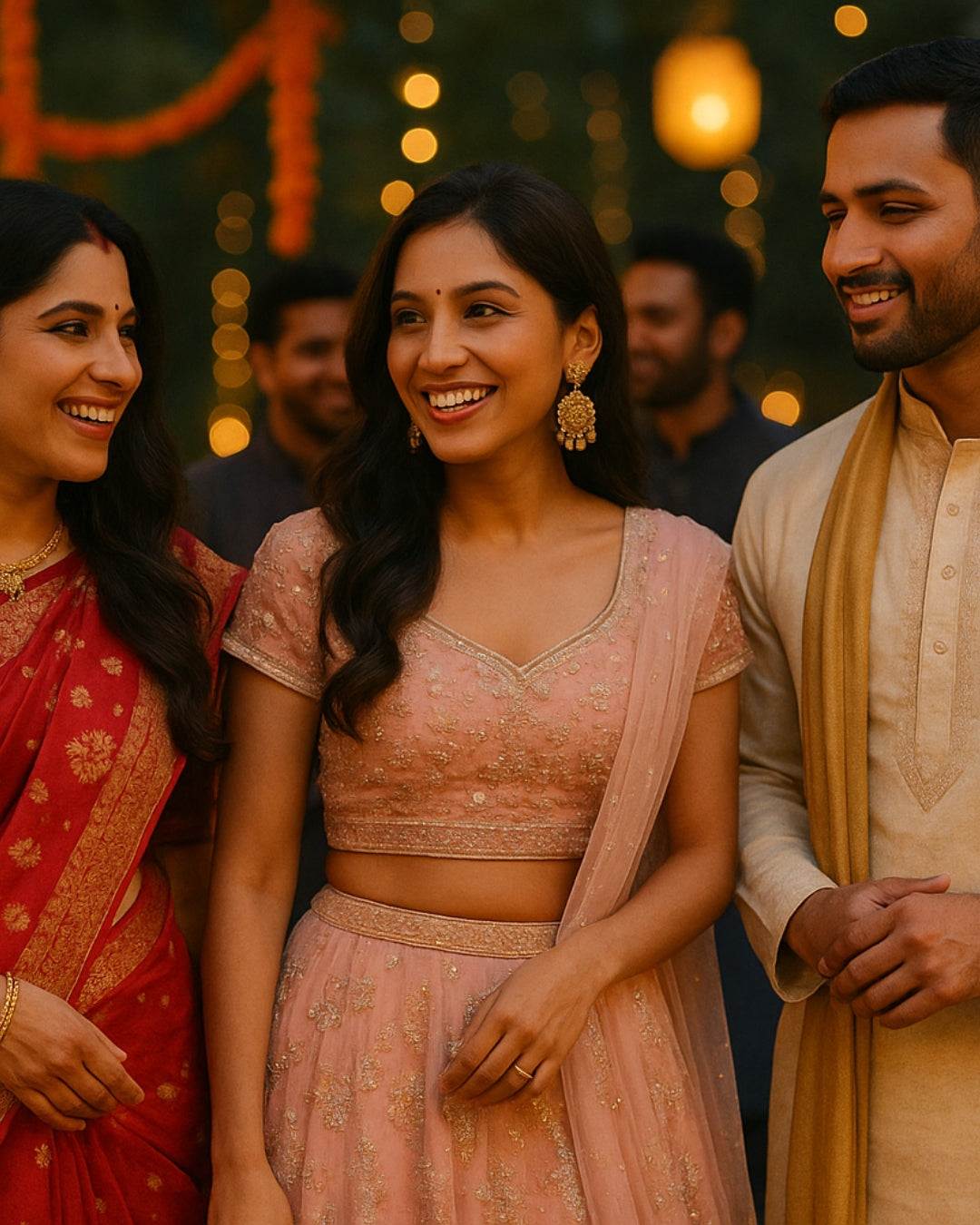The Timeless Elegance of Banarasi Silk: A Journey Through History
In the shimmering threads of Banarasi silk lies not just fabric, but a legacy — a story spun with royal patronage, artisanal mastery, and centuries of cultural richness. Discover why Banarasi silk remains the gold standard of Indian textile traditions, from Mughal courts to modern runways.
Introduction: The Enduring Allure of Banarasi Silk
Banarasi silk is not just a textile; it’s an experience — one that embodies centuries of tradition, opulence, and unparalleled artistry. Originating from the holy city of Varanasi (also known as Banaras), this exquisite fabric has adorned brides, graced royal courts, and earned a place of pride in every Indian woman’s wardrobe. With its intricate motifs, gold and silver zari work, and rich texture, Banarasi silk sarees from House of AKS continues to be a symbol of timeless elegance and cultural heritage.
Whether it’s a grand Indian wedding, a festive celebration, or a fashion-forward ensemble, Banarasi silk remains a staple that beautifully bridges the past and the present.
The Historical Origins of Banarasi Silk
The story of Banarasi silk traces back to the Mughal era in the 14th century, when Persian motifs and Mughal aesthetics fused with Indian weaving traditions. The Mughals brought with them a love for ornate artistry, which profoundly influenced the handloom industry in Banaras.
Over time, the city became a thriving center for silk weaving, with skilled artisans perfecting their craft and passing it down through generations. This deep-rooted tradition led to the development of several Banarasi styles, each unique in its weave, pattern, and finish.
Key Historical Highlights:
• Mughal Patronage: Flourished under emperors who promoted fine craftsmanship.
• Varanasi as a Hub: Became India’s central silk weaving city.
• Weaver Communities: Generational weavers (Karigars) from Muslim and Hindu backgrounds preserved the artistry.
The Traditional Weaving Techniques of Banarasi Silk
Creating a single Banarasi silk saree can take anywhere between 15 days to 6 months, depending on the intricacy of the design. Each piece is a labor of love, involving multiple artisans and elaborate handloom techniques.
Key Techniques Involved:
• Zari Work: Gold and silver threads are woven into patterns that shimmer with royalty.
• Kadhua Weave: A painstakingly slow process where motifs are woven separately, giving a raised, embossed feel.
• Tanchoi & Jamdani: Weaves that blend Persian patterns with Indian craftsmanship.
• Jangla & Cutwork: Rich floral and vine patterns, often done in vibrant colors.
Tools Used:
Wooden looms, jacquard cards (punched patterns), shuttle weaving — all operated manually.
Evolution of Banarasi Silk Through the Ages
While Banarasi silk’s roots are ancient, its evolution is a testament to its adaptability and relevance. From traditional sarees worn by queens and brides to chic fusion wear seen on global runways, Banarasi silk has kept pace with changing fashion sensibilities.
Key Phases of Evolution:
• Pre-Independence: A status symbol for nobility and aristocracy.
• Post-Independence: Recognized as a cultural heritage, leading to a revival of weaving clusters.
• 21st Century: Adopted by designers for modern silhouettes — lehengas, dupattas, kurtas, and even Western ensembles like gowns and jackets.
Banarasi Silk in Indian Weddings and Festivals
No Indian bridal trousseau is complete without a Banarasi wedding sarees from our exclusive bridal collection. It is a must-have heirloom piece that’s often passed down through generations.
Why Banarasi Silk Is Essential in Weddings:
• Symbol of Prosperity: The richness of the silk and the intricacy of the zari denote wealth and blessings.
• Emotional Legacy: Often chosen for its sentimental and cultural value.
• Timeless Appeal: Classic motifs like lotus, kalga, and bel never go out of style.
Festivals like Diwali, Durga Puja, and Eid also see women draped in Banarasi silk, highlighting its festive allure.
Key Features That Define Authentic Banarasi Silk
When shopping for genuine Banarasi silk, look for these defining traits:
• Pure Mulberry Silk Base
• Intricate Zari (Gold or Silver Thread) Work
• Heavy Brocade or Jaal Patterns
• Finely Woven Pallu and Border
• GI Tag (Geographical Indication tag that certifies authenticity)
Modern Trends in Banarasi Silk Fashion
Contemporary designers are reinventing Banarasi silk to appeal to a global, younger audience. Think structured jackets, cropped blouses, palazzo suits, and even Banarasi sneakers!
Emerging Trends:
• Banarasi Lehengas: Preferred over heavily embroidered ones for their royal yet lightweight feel.
• Silk Dupattas: Paired with minimal kurta sets for understated glam.
• Fusion Outfits: Banarasi crop tops, trousers, and skirts seen in Indo-western weddings.
• Minimalist Weaves: Designers now create pastel, geometric, and tone-on-tone Banarasi silks.
Cultural Significance and Artisan Legacy
Banarasi silk is not just a fabric; it’s a livelihood for thousands of artisans in Varanasi and neighboring districts. These weavers, often working from humble homes, preserve the soul of this art through devotion and inherited skill.
Cultural Facts:
• Over 1 million people are engaged in the Banarasi weaving industry.
• Every saree has a story — often personalized with family motifs, poetic verses, or ancestral customs.
• Recognized by UNESCO under its intangible cultural heritage tag (as part of Indian handloom traditions).
Why You Should Own a Banarasi Silk Piece
Whether it’s a bridal saree, a dupatta for your festive wardrobe, or a contemporary silk jacket — Banarasi silk is a timeless investment that transcends trends and seasons.
Reasons to Invest:
• Heritage Value: Each piece reflects centuries of Indian craftsmanship.
• Versatility: Wear it traditionally or mix it with modern styles.
• Elegance: Instantly elevates your look with minimal effort.
• Sustainability: Handwoven silks are a slower, more ethical fashion choice.
Explore the timeless beauty of Banarasi silk with House of AKS — where every weave narrates a story, every drape celebrates heritage. Browse our curated Banarasi silk collection and join us on social media to stay inspired!
Follow us:
Instagram | Facebook | Pinterest | Linkedin
Tell us your Banarasi story in the comments — is it your mother’s saree, your wedding outfit, or a piece you fell in love with at first sight?
Share this blog with someone who loves Indian textiles as much as you do.
Final Thoughts: A Weave Beyond Time
The elegance of Banarasi silk lies in its ability to preserve history while evolving with fashion. It is as relevant today as it was centuries ago — a perfect blend of tradition, luxury, and innovation. In every thread, there’s a tale of devotion, in every motif, a whisper of heritage.
Let Banarasi silk be more than just an occasion wear — let it be a piece of your legacy.




